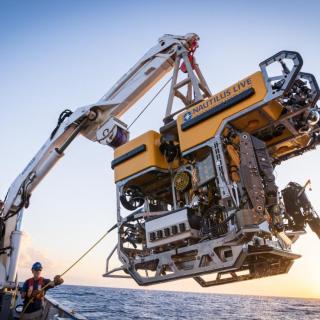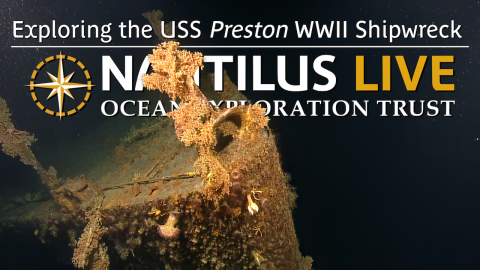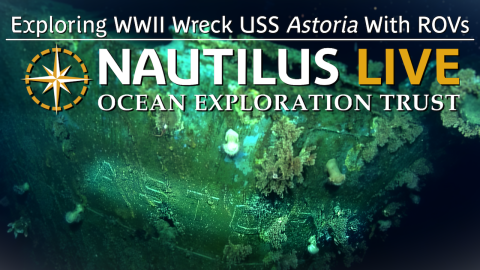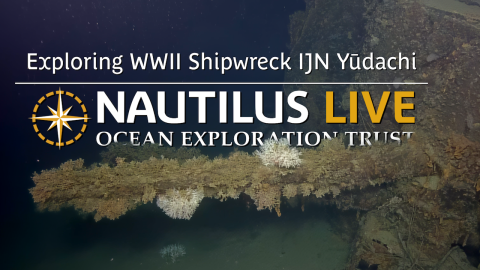First Sighting of USS Quincy Shipwreck in 30+ Years
During the Maritime Archaeology of Guadalcanal expedition (NA173), the international team onboard E/V Nautilus explored the World War II shipwreck USS Quincy. This is the first visual survey of the 179-meter-long New Orleans-class heavy cruiser in 33 years since its discovery by a Dr. Robert Ballard-led expedition in 1992. Like her sister ships Astoria and Vincennes, Quincy was lost a surprise attack by the Imperial Japanese Navy in the Battle of Savo Island in August of 1942. Over the decades, Quincy as become entangled in drifting fishing gear making ROV piloting dangerous across the full site. Explore with the team to image the ship's first and second 8" turrets, and glimpses of the ghost fishing gear-wrapped bridge from afar, appearing to be still mostly intact.
During the NA173 expedition, our international team utilized the remotely operated vehicle and telepresence systems of E/V Nautilus, in combination with the mapping capabilities of uncrewed surface vehicle DriX, to conduct non-invasive archaeological surveys of cultural heritage sites in the Iron Bottom Sound. This expedition is supported by NOAA Ocean Exploration via the Ocean Exploration Cooperative Institute. This exploration is made possible by the expertise, support, and collaboration of many partners, including NOAA Ocean Exploration, U.S. Naval History and Heritage Command, Solomon Islands government, University of New Hampshire Center for Coastal and Ocean Mapping/Joint Hydrographic Center, University of Rhode Island, and Japanese, Australian, and New Zealand archaeological colleagues.

Maritime Archaeology of Guadalcanal: Iron Bottom Sound
Located in the Solomon Islands between the islands of Guadalcanal, Savo, and Nggela, Iron Bottom Sound was the stage of five major naval battles between August and December 1942 which resulted in the loss of over 20,000 lives, 111 naval vessels, and 1,450 planes. These underwater cultural heritage sites now rest on the seafloor offshore Honiara in a confined area less than 25 nautical miles wide, 40 nautical miles long, and 1,400 meters deep.



